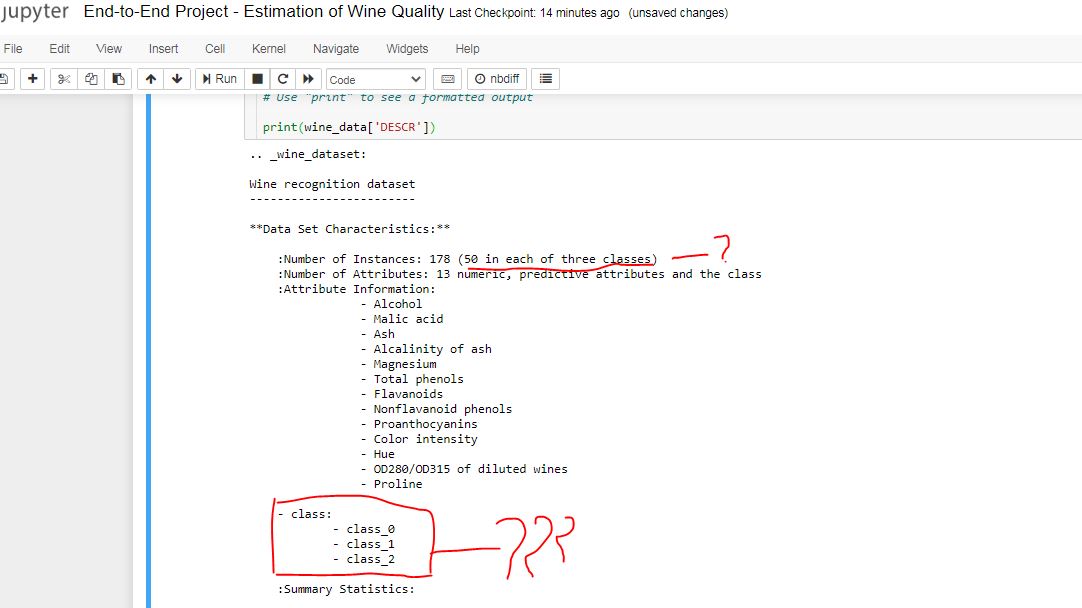I got the accuracy as 83% by using random forest .How can i increase it more?
I have used cross validation and standardscaler()
Below are the best parameter i got using grid search
RandomForestRegressor(bootstrap=True, criterion=‘mse’, max_depth=None,
max_features=2, max_leaf_nodes=None,
min_impurity_decrease=0.0, min_impurity_split=None,
min_samples_leaf=1, min_samples_split=2,
min_weight_fraction_leaf=0.0, n_estimators=30,
n_jobs=None, oob_score=False, random_state=42, verbose=0,
warm_start=False)
Hi Shivom,
You can try a different model, like XGBoost.
Thanks.
In Wine Quality Project, I am trying alternative methods of importing a dataset.
Incase if you are taking the code from sklearn library, —
from sklearn import datasets
wine_data = datasets.load_wine()
wine_data
By doing so----the output is in the form of a Dictionary.
To see the aforesaid Dictionary output in a formatted structure —
print(wine_data[‘DESCR’])
Upon executing this, getting the following output which is being shared as a screenshot.
Doubts/Queries are as follows—
Q1 is what are class_0, class_1 & class_2 in this dataset? I didn’t understand this part…
Q2 Since the original data-set is in the form of a Dictionary, is it possible to convert the same into a Pandas dataframe? How do I do the conversion???
Is there any reference material on this topic/subject for understanding this aspect better?
Q3 Again one more interesting aspect is noticed…
-
Upon importing as Dataframe, 12 variables can be noticed under Descriptive Statistics,
-
Upon importing as a Dictionary, 13 variables are noticed under Descriptive Statistics…
D280/OD315 of diluted wines is variable is missing while importing the raw data as a Dataframe, but can be seen while being imported as a Dictionary data-structure??? Why is this so???
Can someone explain???
Hi Sameer,
You can find more about the dataset from the below link:
https://scikit-learn.org/stable/modules/generated/sklearn.datasets.load_wine.html
If there is a target, and data component in the dictionary, you can use the following:
iris = load_wine()
X = wine.data
y = wine.target
Without looking at your code, it would be impossible to comment on your third question. Also, I would suggest you to start a new thread since the original topic for this thread is different from your queries.
Thanks.
Hi Rajtilak,
Sorry for the delay in replying to & acknowledging your message.
Appreciate for sharing the link
I have noted your comments and shall start a new thread for the topic.
Thanks once again.

